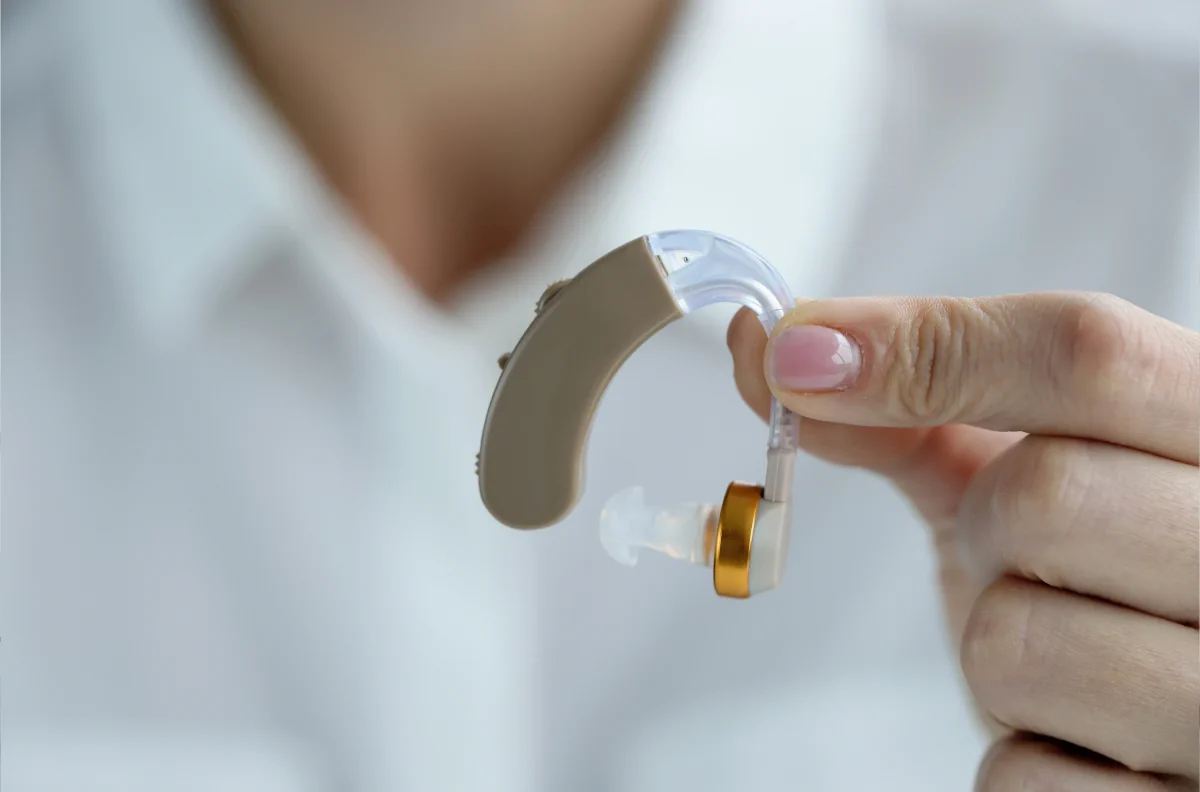- DEPARTMENT
- MEDICAL ONCOLOGY
- SURGICAL ONCOLOGY
- NEPHROLOGY
- UROLOGY
- MEDICAL GASTROENTEROLOGY
- SURGICAL GASTROENTEROLOGY
- NEUROLOGY
- NEURO SURGERY
- PEDIATRIC SURGERY
- PLASTIC SURGERY
- CARDIOLOGY
- GENERAL SURGERY
- ORTHOPEDICS
- OBSTETRICS & GYNECOLOGY
- GENERAL MEDICINE
- PEDIATRICS
- PULMONOLOGY
- DERMATOLOGY
- ENT
- MAXILLOFACIAL SURGEON
- DENTAL SCIENCES
- ANAESTHESIA & CRITICAL CARE
- EMERGENCY MEDICINE & TRAUMA
- PAIN MANAGEMENT
- PATHOLOGY
- PHYSIOTHERAPY
ENT

Dr. T. Sreepathy Naidu
CONSULTANT MBBS, MS(ENT)
Otolaryngology, commonly known as ENT (ear, nose, and throat) surgery, is a medical specialty that focuses on the diagnosis, treatment, and management of disorders affecting the ears, nose, throat, head, and neck. Otolaryngologists, also referred to as ENT specialists, possess expertise in both medical and surgical interventions, addressing a diverse range of conditions ranging from hearing loss and sinusitis to head and neck cancers. In this comprehensive overview, we will explore the intricate realm of otolaryngology, examining its scope, significance, procedures, and advancements.
Understanding Otolaryngology
Historical Evolution
The roots of otolaryngology can be traced back to ancient civilizations, where early healers treated ailments of the head and neck using rudimentary techniques and herbal remedies. Over time, the field evolved with advancements in medical science, technology, and surgical innovation. Otolaryngologists today benefit from a rich legacy of knowledge and expertise passed down through generations, enabling them to provide comprehensive care for patients with conditions affecting the ears, nose, throat, and related structures.
Scope of Practice
Otolaryngology encompasses a broad spectrum of medical and surgical interventions, addressing various anatomical regions and clinical concerns:
Ear Disorders
Hearing Loss: Otolaryngologists evaluate and manage hearing loss due to conductive, sensorineural, or mixed etiologies, utilizing diagnostic tests such as audiometry, tympanometry, and otoacoustic emissions testing to assess auditory function and determine appropriate treatment modalities, including hearing aids, cochlear implants, and surgical interventions such as tympanoplasty or stapedectomy.
Otitis Media: Otolaryngologists diagnose and treat acute and chronic otitis media, inflammation or infection of the middle ear, using antibiotic therapy, myringotomy with tube placement, and tympanoplasty procedures to alleviate symptoms, prevent complications, and restore middle ear ventilation and drainage.
Meniere’s Disease: Otolaryngologists manage Meniere’s disease, a disorder of the inner ear characterized by recurrent vertigo, hearing loss, tinnitus, and ear fullness, through a combination of dietary modifications, vestibular rehabilitation, medical therapy (e.g., diuretics, vestibular suppressants), and surgical interventions (e.g., endolymphatic sac decompression, vestibular nerve section).
Nasal and Sinus Disorders
Chronic Rhinosinusitis: Otolaryngologists diagnose and treat chronic rhinosinusitis, inflammation of the nasal and sinus mucosa lasting longer than 12 weeks, utilizing medical therapies such as nasal corticosteroids, saline irrigation, and oral antibiotics, as well as surgical interventions such as functional endoscopic sinus surgery (FESS) to improve sinus drainage and ventilation.
Nasal Polyps: Otolaryngologists manage nasal polyps, benign growths arising from the nasal and sinus mucosa, through a combination of medical therapy (e.g., intranasal corticosteroids, oral corticosteroids) and surgical interventions (e.g., endoscopic sinus surgery, polypectomy) to relieve nasal obstruction, improve sinus ventilation, and reduce polyp recurrence.
Septal Deviation: Otolaryngologists correct septal deviation, a structural abnormality of the nasal septum causing nasal obstruction and airflow obstruction, through septoplasty surgery to straighten the deviated septum, improve nasal airflow, and alleviate symptoms of nasal congestion, snoring, and sleep-disordered breathing.
Throat and Laryngeal Disorders
Laryngopharyngeal Reflux (LPR): Otolaryngologists diagnose and manage laryngopharyngeal reflux, a condition characterized by reflux of gastric contents into the larynx and pharynx, causing throat irritation, hoarseness, cough, and throat clearing, utilizing lifestyle modifications, dietary changes, proton pump inhibitors (PPIs), and voice therapy to reduce reflux symptoms and laryngeal inflammation.
Vocal Cord Disorders: Otolaryngologists evaluate and treat vocal cord disorders such as nodules, polyps, cysts, and paralysis, utilizing diagnostic tools such as laryngoscopy, videostroboscopy, and electromyography (EMG), as well as interventions such as voice therapy, injection laryngoplasty, and vocal cord surgery (e.g., microlaryngeal surgery, laser cordectomy).
Sleep Apnea: Otolaryngologists manage obstructive sleep apnea (OSA), a sleep-related breathing disorder characterized by repetitive episodes of upper airway obstruction during sleep, through a combination of conservative measures (e.g., weight loss, positional therapy) and surgical interventions such as uvulopalatopharyngoplasty (UPPP), genioglossus advancement, and hyoid suspension to improve upper airway patency and reduce apnea-hypopnea index (AHI).
Head and Neck Disorders
Thyroid Disorders: Otolaryngologists evaluate and manage thyroid disorders such as hyperthyroidism, hypothyroidism, thyroid nodules, and thyroid cancer, utilizing diagnostic modalities such as thyroid ultrasound, fine-needle aspiration (FNA) biopsy, and thyroid function tests, as well as surgical interventions such as thyroidectomy or thyroid lobectomy for nodular disease or malignancy.
Head and Neck Cancer: Otolaryngologists diagnose and treat head and neck cancers, including squamous cell carcinoma of the oral cavity, larynx, pharynx, and salivary glands, utilizing a multidisciplinary approach that may include surgery, radiation therapy, chemotherapy, immunotherapy, and targeted therapy to achieve optimal oncologic outcomes while preserving function and aesthetics.
Facial Trauma: Otolaryngologists manage facial trauma injuries, including fractures of the mandible, maxilla, orbit, nasal bones, and zygoma, through surgical interventions such as open reduction and internal fixation (ORIF), facial fracture repair, soft tissue reconstruction, and scar revision to restore facial aesthetics, function, and symmetry.
Diagnostic Evaluation
Otolaryngologists employ a variety of diagnostic tools and techniques to evaluate patients with ear, nose, throat, and head and neck disorders:
Clinical History: Otolaryngologists conduct a comprehensive medical history, including present illness, past medical and surgical history, medication use, allergies, and social history, to gather relevant information and guide diagnostic decision-making.
Physical Examination: Otolaryngologists perform a thorough head and neck examination, including inspection, palpation, and visualization of the ears, nose, throat, oral cavity, neck, and facial structures to identify abnormalities, lesions, or signs of infection or inflammation.
Endoscopic Evaluation: Otolaryngologists utilize flexible or rigid endoscopes to visualize internal structures of the nose, throat, larynx, and upper airway, enabling detailed examination, documentation, and assessment of mucosal surfaces, anatomical landmarks, and pathological findings.
Imaging Studies: Otolaryngologists order imaging studies such as computed tomography (CT), magnetic resonance imaging (MRI), ultrasound.
